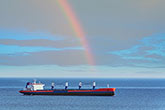BASF and Yara to evaluate low-carbon blue ammonia project at US Gulf Coast
Published by Isabelle Keltie,
Editorial Assistant
Dry Bulk,
BASF and Yara Clean Ammonia are collaborating on a joint study to develop and construct a world-scale low-carbon blue ammonia production facility with carbon capture in the US Gulf Coast region. The companies are looking into the feasibility of a plant with a total capacity of 1.2 to 1.4 million tpy to serve the growing global demand for low-carbon ammonia.
Magnus Krogh Ankarstrand, President of Yara Clean Ammonia, said: “Yara and BASF have successfully collaborated in the past and we are pleased to explore a new clean ammonia project together. In line with Yara Clean Ammonia’s strategy, we are working systematically to develop asset-backed supply to decarbonise agriculture as well as serving new clean ammonia segments such as shipping fuel, power production and ammonia as a hydrogen carrier.”
Approximately 95% of the carbon dioxide generated from the production process is aimed to be captured and permanently stored in the ground. This would allow Yara to serve its customers with clean ammonia with a significantly reduced product carbon footprint. For BASF, the new plant would act as backward integration to serve the company’s demand for low-carbon ammonia and would lower the carbon footprint of its ammonia-based products.
Dr. Ramkumar Dhruva, President Monomers Division, BASF, said: “This project underlines BASF’s commitment to drive the sustainable transformation of the chemical industry. Our existing Verbund sites in the region with integrated material flows and advanced infrastructure would be ideally suited for the integration of a new world-scale ammonia facility that has the potential to significantly improve the carbon footprint of both our own operations and the various industries we serve.”
BASF and Yara are long-standing collaboration partners and successfully operating a joint world-scale ammonia plant at BASF’s site in Freeport, Texas. The companies plan to complete the feasibility study on the low-carbon blue ammonia production facility by end of 2023.
The product characteristics of blue ammonia are identical to conventionally produced ammonia. Since the CO2 generated in the production process is captured and not released to the atmosphere, blue ammonia plays a significant role in the transition to alternative, less carbon-intensive products. BASF aims to reduce its absolute CO2 emissions by 25% by 2030 compared to 2018 and achieve net zero CO2 emissions by 2050. Yara has a strong track record in greenhouse gas abatement. Since becoming a listed company in 2004, Yara has almost halved its emissions and will reduce a further 30% by 2030. Yara aims to become climate-neutral and grow a nature-positive food future.
Read the article online at: https://www.drybulkmagazine.com/environment-sustainability/11072023/basf-and-yara-to-evaluate-low-carbon-blue-ammonia-project-at-us-gulf-coast/
You might also like
BIMCO and IBIA collaborate on maritime challenges
IBIA and BIMCO have announced their collaboration on fuel and maritime challenges in order to facilitate shipping's decarbonisation.

